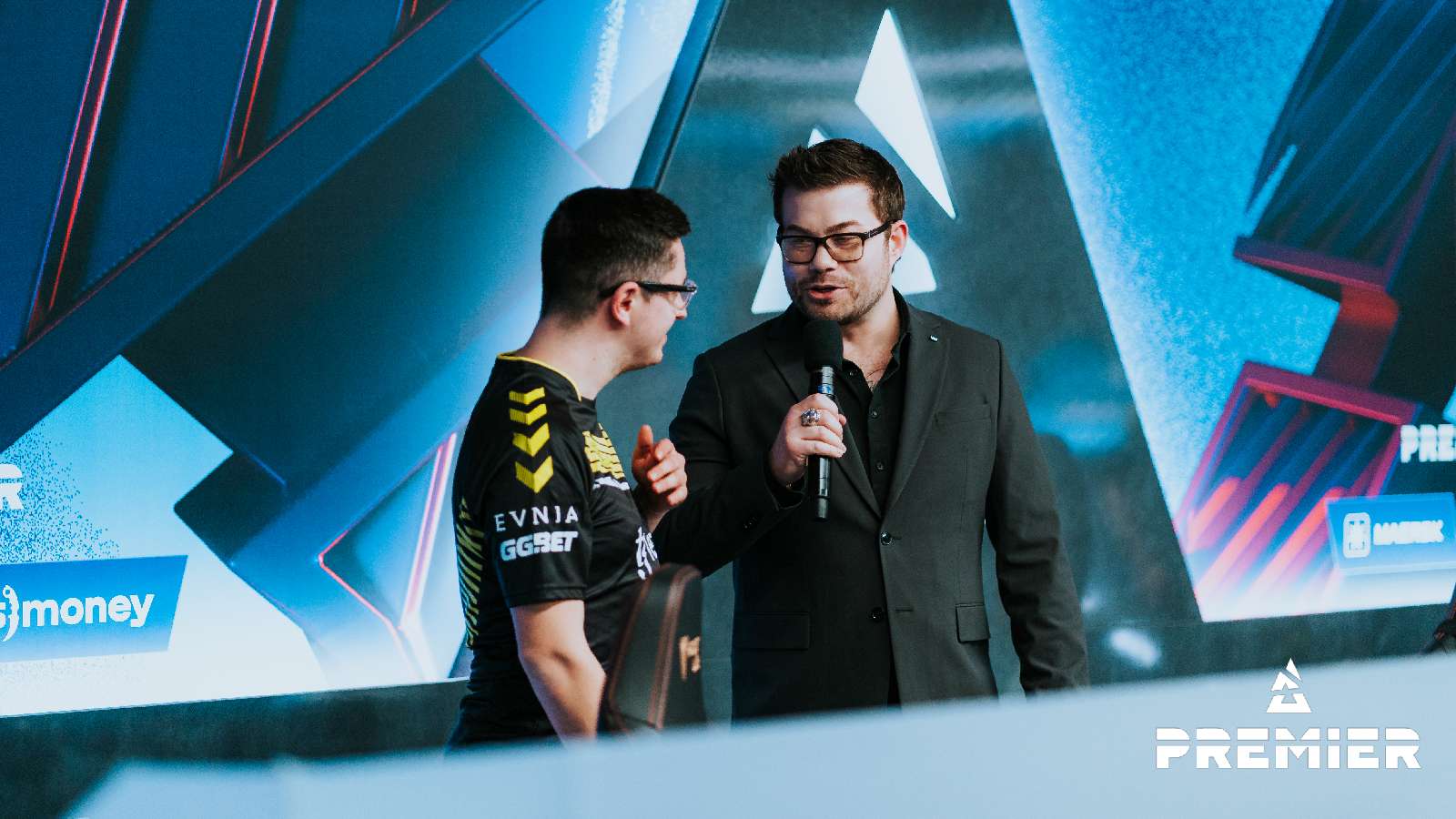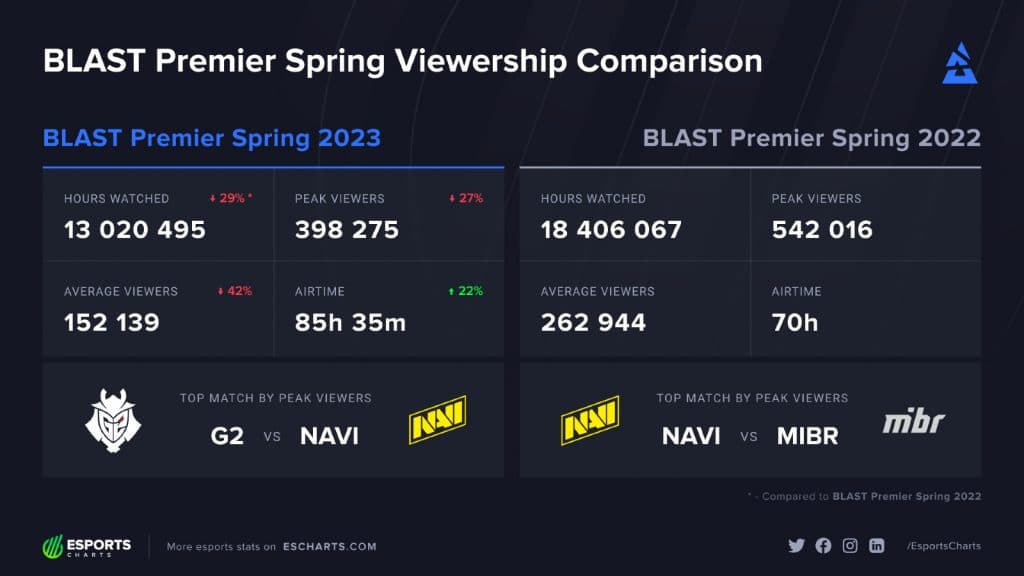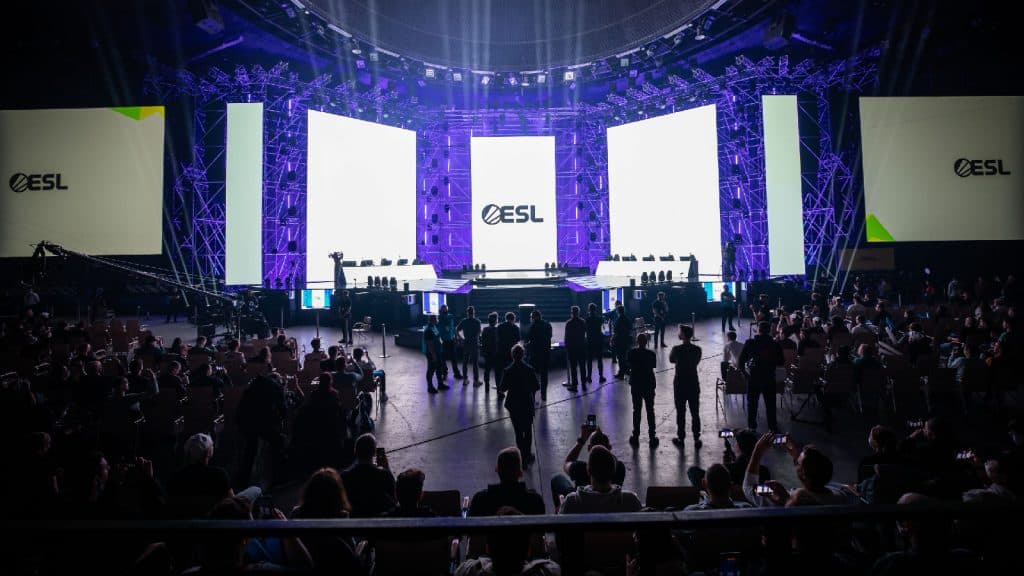As BLAST Premier viewership craters, is there cause for worry?
 Jak Howard/BLAST
Jak Howard/BLASTThe first big CSGO tournament of 2023, the BLAST Premier Spring Groups, drew unimpressive viewership numbers. But we shouldn’t sound the alarm bells just yet.
As on-air talent James Banks announced Mathieu ‘ZywOo’ Herbaut as the MVP of the BLAST Premier Spring Groups, the most surprising thing wasn’t that the French player received the award (although it could be easily argued that Nikola ‘NiKo’ Kovač, with a 1.48 HLTV rating, a 1.70 Impact and a 97.5 ADR, deserved it more).
It was that the player was nowhere to be seen to collect his new hardware.
“I’ll hold on to it for him for now,” Banks said.
ZywOo and his French teammates had left Copenhagen days earlier to prepare for their next outing, IEM Katowice, which starts on February 1.
The fact that a tournament MVP can be announced several days after he played his last match just speaks to the weaknesses of the format in question, which has come under criticism in many quarters. Under the new BLAST Premier format, the three group winners automatically qualify for the Spring Finals, skipping the Play-In stage altogether.
Throughout its ten-day run, the BLAST Premier Spring Groups averaged 152,139 viewers, according to statistics website Esports Charts. This represents a decline of 110,000 viewers (42 percent) when compared to the 2022 Spring Groups and of 26,000 viewers (14.7 percent) when looking at the 2022 Falls Groups. The event, which was held in a studio setting in Copenhagen, peaked at 398,275 viewers, down 26.5 percent from the 542,016 peak during the 2022 Spring Groups, held entirely online.
The trend of decreasing online viewership isn’t exclusive to CS:GO, with League of Legends’ LEC and LCS also losing viewers despite catering to new audiences with its watch party program, although to a lesser extent. (Mobile esports, meanwhile, is thriving, especially in Southeast Asia.)
At the same time, a number of reasons help explain this sharp decrease.
 Esports Charts
Esports ChartsBLAST Premier no longer has any Brazilian partners after MIBR’s parent company, the Immortals Gaming Club, sold its slot to Heroic in April 2022. Peak viewership for Portuguese broadcasts dropped 69%, from 121,087 in the 2022 Spring Groups to just 37,067 in this month’s event. And there was also a 53 percent dip in the Russian broadcast’s peak viewership, from 178,980 and 84,127, which could be explained in part by the change in coverage studio from WePlay to Relog Media.
In November 2022, BLAST also launched its own live viewing platform called BLAST.tv, whose audience is not accounted for by Esports Charts. Viewership figures for BLAST.tv have not been disclosed by the tournament organizer.
Contacted by Dexerto, BLAST added that most of the numbers provided by Esports Charts don’t consider broadcast reach and exclude China, “which counts for millions of viewers during each event and is one of our strongest regions.”
In an article published in December 2022, Esports Charts explained that “it is impossible” to calculate Chinese viewership numbers accurately using open data as the country’s popular streaming platforms do not show the number of viewers tuned in “but rather a quite abstract metric named The Heat.”
When the tournament feels like a slog
Despite some slight improvements to the format, the BLAST Premier circuit remains a disjointed product. The Spring Groups still felt like a low-stakes, drawn-out qualifier for an event that is months away and that will even be held on a different continent. By the time the Spring Finals begin in Washington, four months will have passed and several high-stakes tournaments will have been played out (including the BLAST Major in Paris). No one will even remember how those teams got there.
Before the end of 2022, the BLAST Premier World Final averaged 162,465 viewers, a 47% decrease when compared to the 2021 World Final. The tournament came under fierce criticism for its Abu Dhabi location (which also made it so a number of matches, including the grand final, weren’t held during European prime time) and for a flawed Leaderboard system that seems tailor-made for partner teams.
 Adela Sznajder/ESL Gaming via ESPAT
Adela Sznajder/ESL Gaming via ESPATIEM Katowice will be an acid test for the health of CS:GO’s esports ecosystem. Not only will it feature a crowd during the playoffs, which makes for a better and more attractive product, but it’s also the sort of landmark moment that people circle on their calendars and tune in to, even those who may not be die-hard fans or players. And it also has, thanks to its qualifying system, all the best teams in the world, which isn’t even necessarily the case for Majors.
But even then, we might still be reliant on a handful of popular teams making deep runs to match, or even come close to, last year’s Katowice viewership numbers. Underdog tales are cool and all, but when teams like NAVI, FURIA, G2 and FaZe underperform, viewership tanks. The IEM Rio Major final, between Heroic and Outsiders, peaked at 1,176,319 viewers, which is less than the same tournament’s quarter-final match between NAVI and FURIA (1,428,993) or the 2022 IEM Cologne final between FaZe and NAVI (1,249,426). And that figure also pales in comparison to the grand finals of the Stockholm or the Antwerp Majors (2,748,434 and 2,113,610 respectively).
Enjoy IEM Katowice while you can. Ten days later, ESL Pro League Season 17 starts in Malta, a month-long affair destined to squeeze as many airtime hours as possible, a strategy that is not likely to go away anytime soon, especially if certain key metrics plummet during this testing year for esports.